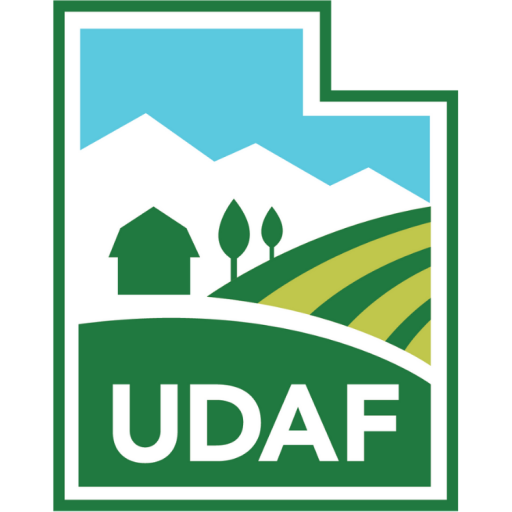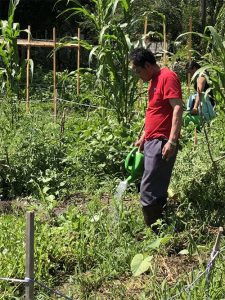
Commissioner Kerry Gibson
Most Utahns don’t know this but in the last couple of years our ranchers, government partners, and others have come together to create an important evolutionary step in rotational grazing agreements. The key to this accomplishment was communication, commitment, and collectivism.
It may seem most citizens will feel little or no impact from this effort, but the lessons learned are a great reminder for all of us. Healthier rangelands mean a stronger more natural ecosystem, an ability to capture and hold precious water resources, and stronger economic prosperity for ranchers.
Let me explain how we got here because I believe this application is viable in urban business settings, with social issues, and strikes at the root of so many challenges each of us face in life.
In 1833, British economist William Forster Lloyd penned an essay theorizing that uncoordinated animal grazing will ultimately destroy the richness of resources neighboring ranchers enjoy. Lloyd felt it was critical for landowners to understand that the decisions of individuals can harm the collective if everyone keeps to themselves.
More than a century later, American biologist Garrett Hardin amplified the work of Lloyd, publishing an expanded version of his own application of the theory and calling it The Tragedy of the Commons. This time-honored principle of organizing with neighbors extends far beyond ranching. We can all learn to better communicate with one another, share one another’s burdens, and create a synergy that simply accomplishes more.
Even before I assumed the role of commissioner of the Utah Department of Agriculture and Food (UDAF), our agency has worked tirelessly as a convener of this effort in a project called The Three Creeks Grazing Allotment Consolidation, located in the northeast corner of our state. Prior to the agreement, the Three Creeks area was struggling. Riparian waterways were drying up, plant varieties and wildlife were disappearing, ranchers were limited in their resources and growth, and the area’s entire ecology was significantly strained.
Seeing this was the case, in 2009 UDAF, 39 area agriculture producers in Rich County, and federal partners came together to invoke the powers of the National Environmental Policy Act (NEPA) of 1970. These pioneers of grazing cooperation knew their communication was the key to turning things around and the federal NEPA process was the first step.
NEPA was designed to empower federal agencies with authority over managing environmental concerns impacted by projects – preventing a Tragedy of the Commons.
The entire process from beginning to final approval in 2017 took a lot of years, but it was collaborative and set up an important precedent. We’re only a couple of years in but are already seeing progress with improved water resources, the return of plant and wildlife, and an opportunity for ranchers to flourish. However, we believe much can be improved. So allow me to share with you what I feel we can do better the next time.
First, we learned the critical importance of continuity and communication with our federal partners, specifically the Bureau of Land Management (BLM) and US Forest Service (USFS). Simply put, leadership turnover in these agencies hurts momentum, and we need to find new ways to strengthen that consistency and commitment.
We also discovered that there is too much redundancy in the NEPA process. Thousands of environmental assessments and impact studies have been done on routine grazing infrastructure improvements, such as water developments and fencing. Do we really need to keep doing them?
Finally, I propose that we need to empower the BLM and USFS to review and evaluate State Water Rights before a decision is made – preventing the customary sluggishness that occurs after. And, we feel that NEPA processes should be spearheaded by one agency’s process as opposed to multiple agencies to help alleviate confusion and complexity.
The early and future successes of the Three Creeks project are attributed to relentless collaborative efforts of all. As I toured the project recently, I couldn’t help but feel proud of the teamwork, high level of detail, and communication on display, something we can all learn from in every walk of life.
Truly, Three Creeks is an example of common entities, public and private sectors, coming together for the common good. I have no doubt this project, and similar ones we embark on in the future will help avoid the Tragedy of the Commons.







 Don’t be surprised some evening if, in a quiet Logan neighborhood on a back vacant lot between homes, you hear the excitement of Burmese children playing as they gather with parents and grandparents to tend their community garden plots, tell stories, play and dine together.
Don’t be surprised some evening if, in a quiet Logan neighborhood on a back vacant lot between homes, you hear the excitement of Burmese children playing as they gather with parents and grandparents to tend their community garden plots, tell stories, play and dine together. “The first year before the irrigation system was installed they were getting water from a ditch with buckets,” says Crista Sorenson, Cache Refugee Immigration Garden Coordinator and USU Extension Incubator Farm Manager. “But now, with this new system, we are educating them about overwatering as it only takes about 15 minutes to saturate their plots and significantly increase their production.”
“The first year before the irrigation system was installed they were getting water from a ditch with buckets,” says Crista Sorenson, Cache Refugee Immigration Garden Coordinator and USU Extension Incubator Farm Manager. “But now, with this new system, we are educating them about overwatering as it only takes about 15 minutes to saturate their plots and significantly increase their production.” Sorenson said that presently the gardeners are getting acclimated to what grows well in the shortened Cache Valley growing season, and learning about local foods that grow best. However, she hopes to introduce them to concepts of marketing their goods at the Cache Valley Farmer’s Market, CSAs, and roadside stand opportunities in the years ahead.
Sorenson said that presently the gardeners are getting acclimated to what grows well in the shortened Cache Valley growing season, and learning about local foods that grow best. However, she hopes to introduce them to concepts of marketing their goods at the Cache Valley Farmer’s Market, CSAs, and roadside stand opportunities in the years ahead.


